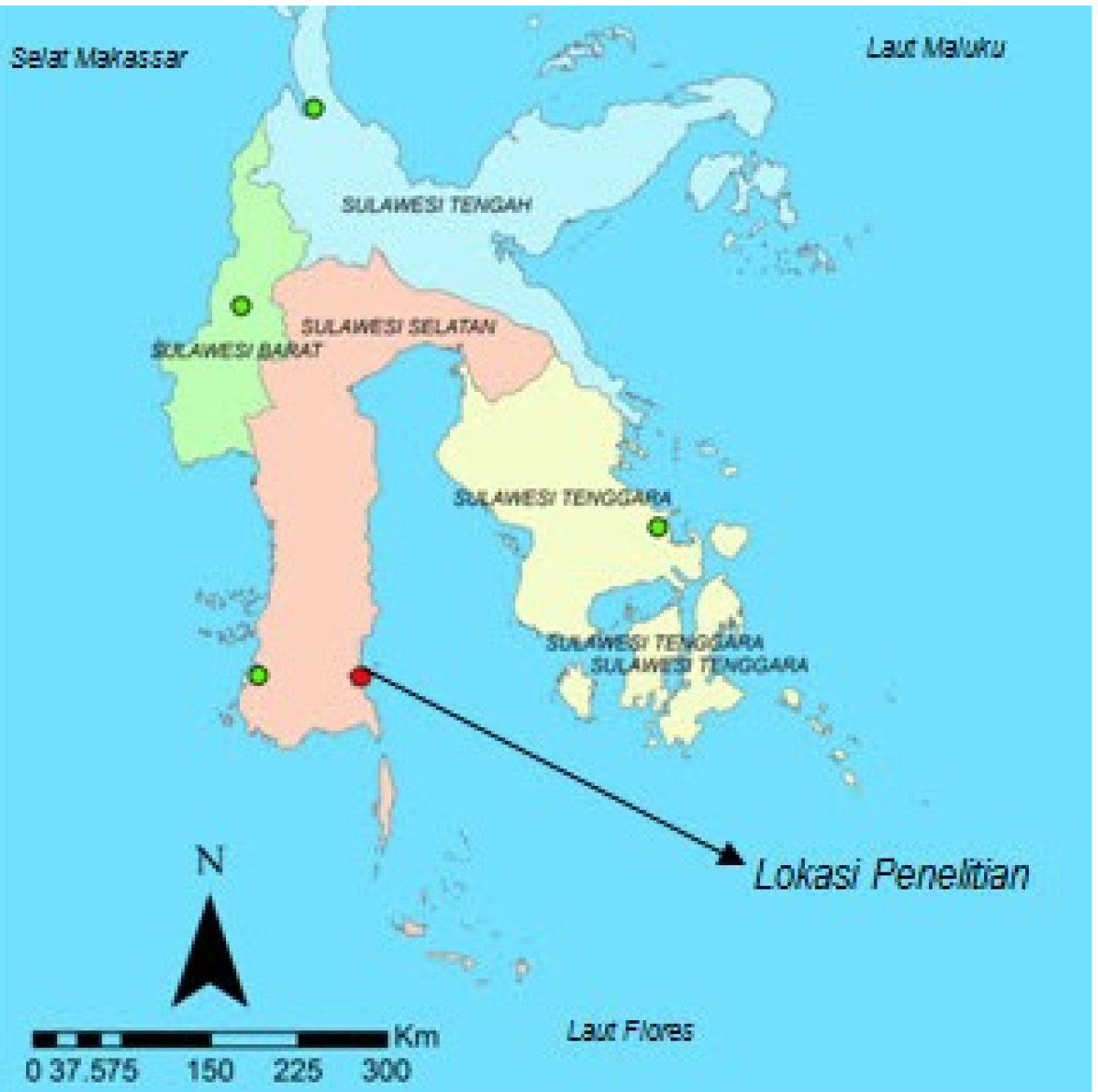Status ekologi hutan mangrove pada berbagai tingkat ketebalan

This research was aimed to know the ecological condition of mangrove forest at various thickness levels and its influence on salinity of fresh water at surrounding area. This research was conducted by analysis of sea water, fresh water, plankton, substrate (soil), and makrobenthos at three location, those were: (1) mangrove with high thickness level (200-300 metre) in Tongke-Tongke Village, (2) mangrove with middle thickness level in Panaikang Village and (3) location without mangrove in Pasimarannu Village. The result of analysis showed that the rate of DO and BOD of seawater in Tongke-Tongke were 5,76 ppm and 1,68 ppm, Panaikang village were 6,48 ppm and 3,63 ppm and Pasimarannu village 6,72 pm and 3,36 ppm. Based on fresh water analysis, the ecosystem of mangrove has significant influence to reduce salinity level. The salinity of fresh water in location with highest thickness level is lowest (Tongke-Tongke is 2.2 ppt) compared to others (Panaikang 2.4 ppt and Pasimarannu 3.2 ppt). The result of substrat analysis showed similar result in which the highest organic substance rate is in Tongke-Tongke followed by Panaikang and Pasimarannu. Abundance of plankton and makrobentos in location with highest thickness level is highest (Tongke-Tongke 210 individu/ml and 849 individu/m2) compared to others (Panaikang is 202 individual/ml and 815 individu/m2 and Pasimarannu village 132 individu/ml and 320 individu/m2)
Anonim, (2006), Valuasi Ekonomi Mangrove di Batu Ampar Pontianak, LPP Mangrove, http://www.imred.com, diakses tanggal 27 Oktober 2008.
Anonim. (1990). Peraturan Pemerintah No. 20 Tahun 1990 tentang pengendalian pencemaran air.
Anwar, C., H. Gunawan. (2006). Peranan ekologis dan sosial ekonomis hutan mangrove dalam mendukung pembangunan wilayah pesisir, http://www.dephut.go.id, diakses tanggal 7 Oktober 2008.
Arisandi, P. (2002). Mangrove hilang, pencemaran pantaipun datang. www.ekoton.or.id, diakses tanggal 7 April 2010.
Cox, G.W. (2002). General ecology laboratory manual (8th ed). USA: The McGraw-Hill Companies, p.312.
Hardjowigeno, S. (2003). Ilmu Tanah. Jakarta: Akademi Pressindo.
Howes, J., D. Bakewell, & Y.R. Noor. (2003). Panduan Studi Burung Pantai, Bogor: Wetlands International-Indonesia Programme.
Kusmana, C., S. Wilarso, I. Hilwan, P. Pamoengkas, C. Wibowo, T Tiryana, A. Triswanto, Yunasfi, & Hamzah. (2003). Teknik Rehabilitasi Mangrove. Bogor: Fakultas Kehutanan IPB.
Menteri Negara Kependudukan dan Lingkungan Hidup. (1988). Keputusan Menteri Negara Kependudukan dan Lingkungan Hidup Nomor 02/MENKLH/I/1988, Tentang pedoman penetapan baku mutu lingkungan.
Ludwig, J.A., & Reynold. (1988). Statistical ecologi. Toronto: Willey Interscience Publ. John Wiley and Sons.
Molles, M.C. (2002). Ecology: concepts and application (2th Ed). USA: The McGraw-Hill Companies.
Odum, P.E. (1993). Dasar-dasar ekologi (Edisi ketiga). Yogyakarta: Gadjah Mada University Press.
Onrizal dan Cecep Kusmana. (2008). Studi Ekologi Hutan Mangrove di Pantai Timur Sumatera Utara. Jurnal Biodiversitas 9, (1), 25-29.
Pratikto, W. (2002). Perencanaan perlindungan pantai alami untuk mengurangi resiko terhadap bahaya tsunami. Makalah disampaikan dalam lokakarya nasional Pengelolaan Ekosistem Mangrove di Jakarta, 6-7 Agustus 2002. Kementerian Perikanan Republik Indonesia.

